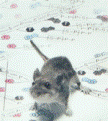Papers in the Biological Sciences

Jay F. Storz Publications
Document Type
Article
Date of this Version
2001
Abstract
Population subdivision into behaviorally cohesive kin groups influences rates of inbreeding and genetic drift and has important implications for the evolution of social behavior. Here we report the results of a study designed to test the hypothesis that harem social structure promotes inbreeding and genetic subdivision in a population with overlapping generations. Genetic consequences of harem social structure were investigated in a natural population of a highly polygynous fruit bat, Cynopterus sphinx (Chiroptera: Pteropodidae), in western India. The partitioning of genetic variance within and among breeding groups was assessed using 10-locus microsatellite genotypes for 431 individually marked bats. Genetic analysis of the C. sphinx study population was integrated with field data on demography and social structure to determine the specific ways in which mating, dispersal, and new social group formation influenced population genetic structure. Microsatellite data revealed striking contrasts in genetic structure between consecutive offspring cohorts and between generations. Relative to the 1998 (dry-season) offspring cohort, the 1997 (wet-season) cohort was characterized by a more extensive degree of within group heterozygote excess (FIS = −0.164 vs. −0.050), a greater degree of among-group subdivision (FST = 0.123 vs. 0.008), and higher average within-group relatedness (r = 0.251 vs. 0.017). Differences in genetic structure between the two offspring cohorts were attributable to seasonal differences in the number and proportional representation of male parents. Relative to adult age-classes, offspring cohorts were characterized by more extensive departures from allelic and genotypic equilibria and a greater degree of genetic subdivision. Generational differences in F-statistics indicated that genetic structuring of offspring cohorts was randomized by natal dispersal prior to recruitment into the breeding population. Low relatedness among harem females (r = 0.002–0.005) was primarily attributable to high rates of natal dispersal and low rates of juvenile survivorship. Kin selection is therefore an unlikely explanation for the formation and maintenance of behaviorally cohesive breeding groups in this highly social mammal.


Comments
Published in Evolution 55:6 (2001), pp. 1215–1223; doi 10.1554/0014-3820(2001)055[1215:GCOPAS]2.0.CO;2. Copyright © 2001 Society for the Study of Evolution; published by Wiley-Blackwell Publishing. Used by permission. http://www3.interscience.wiley.com/journal/117958524/home